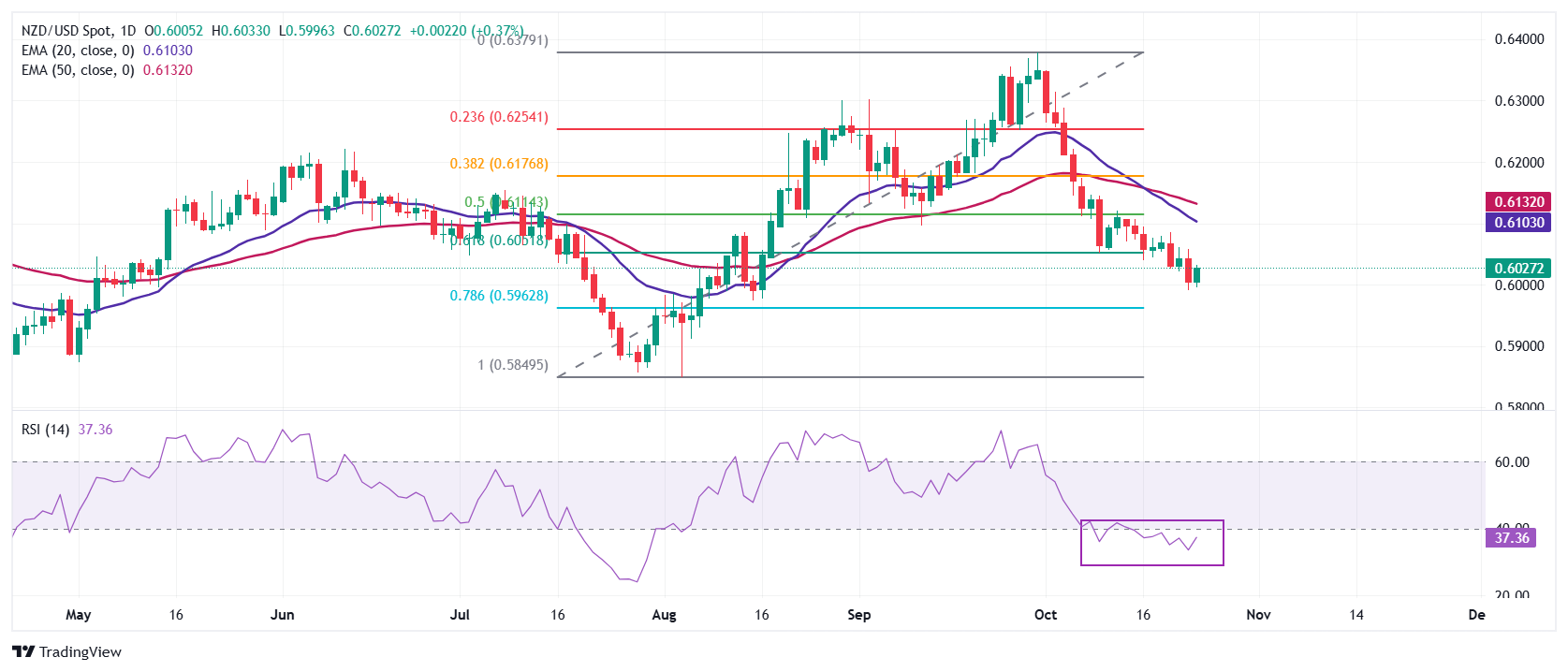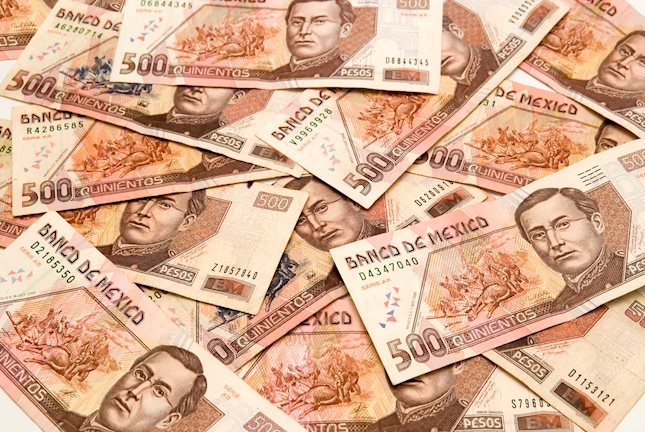NZD/USD Price Forecast: 0.6000 acts as key support
- NZD/USD finds fresh buying interest near 0.6000, while the near-term trend remains bearish.
- The US Dollar’s outlook remains firm due to multiple tailwinds.
- Traders expect the RBNZ to cut interest rates again by 50 bps in November.
The NZD/USD pair bounces back from the psychological support of 0.6000 in Thursday’s European session. The Kiwi pair rebounds as the US Dollar (USD) corrects after posting a fresh high in 12 weeks. The US Dollar Index (DXY) faces pressure while attempting to break above the key resistance of 104.50.
The US Dollar could resume its upside trend amid uncertainty over United States (US) 2024 presidential elections. Meanwhile, the recent rally in the Greenback suggests that trades price in former US President Donald Trump’s victory over current Vice President Kamala Harris.
The US Dollar has also benefitted from growing expectations that the Federal Reserve (Fed) will pursue a modest interest rate cut path.
Meanwhile, the New Zealand Dollar (NZD) is expected to remain weak as traders have priced in 50 basis points (bps) interest rate reduction from the Reserve Bank of New Zealand (RBNZ) in its last meeting of the year on November 27, a similar move seen on October 9. This would be the third straight interest rate cut by the RBNZ in a row.
NZD/USD finds a temporary support near 0.6000. However, the outlook of the Kiwi pair remains weak as it trades below the 61.8% Fibonacci retracement around 0.6050. The Fibo tool is plotted from the July 29 low at 0.5857 to the September 30 high at 0.6380.
Downward-sloping 20- and 50-day Exponential Moving Averages (EMAs) near 0.6100 and 0.6130, respectively, suggests more weakness ahead.
The 14-day Relative Strength Index (RSI) oscillates below 40.00, indicating a strong bearish momentum.
More downside is highly likely towards the August 15 low of 0.5974 and the round-level support of 0.5900 if the pair decisively breaks below the psychological support of 0.6000.
On the flip side, a reversal move above the October 8 high of 0.6146 will drive the asset towards the 50-day EMA at 0.6173 and the October 4 high near 0.6220.
NZD/USD daily chart
New Zealand Dollar FAQs
The New Zealand Dollar (NZD), also known as the Kiwi, is a well-known traded currency among investors. Its value is broadly determined by the health of the New Zealand economy and the country’s central bank policy. Still, there are some unique particularities that also can make NZD move. The performance of the Chinese economy tends to move the Kiwi because China is New Zealand’s biggest trading partner. Bad news for the Chinese economy likely means less New Zealand exports to the country, hitting the economy and thus its currency. Another factor moving NZD is dairy prices as the dairy industry is New Zealand’s main export. High dairy prices boost export income, contributing positively to the economy and thus to the NZD.
The Reserve Bank of New Zealand (RBNZ) aims to achieve and maintain an inflation rate between 1% and 3% over the medium term, with a focus to keep it near the 2% mid-point. To this end, the bank sets an appropriate level of interest rates. When inflation is too high, the RBNZ will increase interest rates to cool the economy, but the move will also make bond yields higher, increasing investors’ appeal to invest in the country and thus boosting NZD. On the contrary, lower interest rates tend to weaken NZD. The so-called rate differential, or how rates in New Zealand are or are expected to be compared to the ones set by the US Federal Reserve, can also play a key role in moving the NZD/USD pair.
Macroeconomic data releases in New Zealand are key to assess the state of the economy and can impact the New Zealand Dollar’s (NZD) valuation. A strong economy, based on high economic growth, low unemployment and high confidence is good for NZD. High economic growth attracts foreign investment and may encourage the Reserve Bank of New Zealand to increase interest rates, if this economic strength comes together with elevated inflation. Conversely, if economic data is weak, NZD is likely to depreciate.
The New Zealand Dollar (NZD) tends to strengthen during risk-on periods, or when investors perceive that broader market risks are low and are optimistic about growth. This tends to lead to a more favorable outlook for commodities and so-called ‘commodity currencies’ such as the Kiwi. Conversely, NZD tends to weaken at times of market turbulence or economic uncertainty as investors tend to sell higher-risk assets and flee to the more-stable safe havens.
Forex News
Keep up with the financial markets, know what's happening and what is affecting the markets with our latest market updates. Analyze market movers, trends and build your trading strategies accordingly.





























